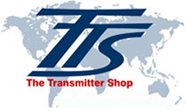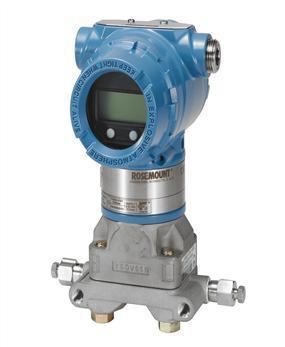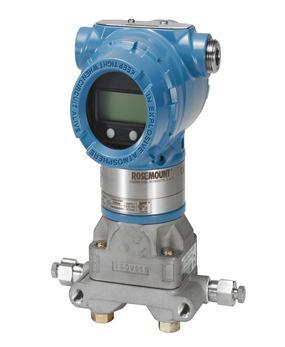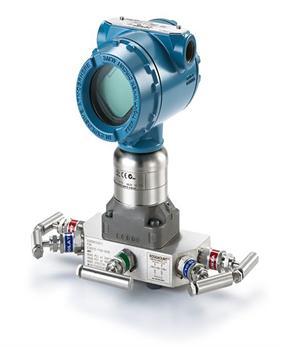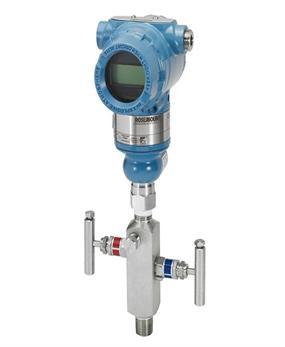BLOG
Procedure to Calculate Accuracy of Pressure Transmitter Discussed
Brian Craig
April 30, 2021
The accuracy of pressure transmitters plays a crucial role in-process monitoring and control across industries. Since pressure is an essential parameter of industrial processes, continuous and accurate monitoring of pressure is of utmost importance. Slightly incorrect measurement in value of pressure may result in pressure shoot-up, pressure drops, and eventually abrupt damage to industrial systems. Needless to say, such incidents pose hazards to operators. In high-pressure hydraulic and pneumatic systems, this can lead to fatal accidents. This is why accuracy of pressure transmitters cannot be jeopardized. Thus, calculation of accuracy of pressure transmitters should be done while selecting and troubleshooting the equipment. This post discusses the process and considerations of calculating accuracy of transmitters.
An Overview of Accuracy of Transmitters
Accuracy of a transmitter is a measure of error that occurs during the measurement of pressure at zero point and measurement of pressure at variable points. If this concept is graphically presented, the measurement at zero point would display a gradually increasing linear graph. However, for real-time pressure measurement at variable points, the graph would represent a slightly curved nature that does not follow linearity. The average deflection between the two graphs is identified as the accuracy of the transmitter.
Note: The deflection/error between two curves cannot be taken as a precise value of accuracy. It is affected by various factors which are to be taken into consideration during calculations.
Often, the accuracy of transmitters is misunderstood as non-linearity. However, non-linearity is just one of the parameters that affect accuracy.
Let us discuss all the parameters that contribute to the calculation of accuracy of pressure transmitters.
Note: The deflection/error between two curves cannot be taken as a precise value of accuracy. It is affected by various factors which are to be taken into consideration during calculations.
Often, the accuracy of transmitters is misunderstood as non-linearity. However, non-linearity is just one of the parameters that affect accuracy.
Let us discuss all the parameters that contribute to the calculation of accuracy of pressure transmitters.
Parameters of Accuracy to Consider While Calculating Accuracy
Ideally, two types of errors are needed to calculate the accuracy of transmitters. The variable parameters of transmitter accuracy are discussed below.
- Non-Linearity: Non-linearity is the primary error that contributes to the calculation of accuracy. This error simply indicates the deflection between the zero span graph and actual measurement graph. Non-linearity can be calculated by using two methods as follows.
- End Point Method/ Terminal Method: In this method, the maximum deflection between graphs at zero point measurement and full-scale measurement is considered non-linearity.
- Five Point Method/Best Fit Straight Line (BFSL) Method: In this method, the curve of actual values is checked for deflection against zero span linear graph at five specific points. Ideally, from zero value to full scale value, five values are selected such as 0% (zero span), 25%, 50% 75% and 100% (full scale). A best fit straight line is drawn through the five points (the line should pass through maximum points out of 5). The deflection between the zero point graph and BFSL graph is taken as non-linearity.
Out of both the above-mentioned methods, BFSL is considered more accurate for calculating non-linearity.
- Hysteresis: Hysteresis is the fluctuation in two or more pressure readings at the same point. Hysteresis is also calculated at 5 calibration points of BFSL process. The mean value of hysteresis values is taken into the calculation of accuracy.
Although the further mentioned variable parameters make minimal impact on the accuracy, still, the slightest error may cost a lot when it comes to industrial process control. Therefore, the following points should be considered while calculating the accuracy.
- Offset Error: Offset error is the difference between the zero point of zero span reading and zero point of actual reading.
- Span Tolerance: The difference between the zero span and full-scale span is span tolerance.
- Non-Repeatability: It is the measure of the difference in multiple readings taken at the same pressure. The difference in signal strength and readings is considered in non-repeatability.
The overall calculation of accuracy of pressure transmitter is the addition of all the above-mentioned parameters.
Now that accuracy calculations and parameters are discussed, you can consider those points while selecting transmitters. However, quality affects accuracy and performance therefore you should source transmitters from reliable suppliers like The Transmitter Shop. The company offers transmitters from reliable suppliers such as Rosemount pressure transmitter, Honeywell Pressure Transmitters, etc
Related Posts
Exploring Density and Viscosity Measurement in Industrial Processes
Pressure Monitoring in Pump Systems: A Comprehensive Guide
Common Challenges in Air Flow Measurement and How to Overcome Them
Monitoring and Controlling Energy Production in Power Plants
Understanding the Impact of Pressure Fluctuations on Drying Performance
Understanding Pressure Ranges and Units for Fluid System Monitoring
The Benefits and Challenges of HVAC System Balancing
An Ultimate Selection Guide for Flow Transmitters
Pressure Transmitters vs. Pressure Transducers: Learn the Differential Characteristics
Multivariable Transmitter: What Is It and How Does It Work?
How Do You Test for 4 to 20mA Signal in a Pressure Transmitter?
Temperature Transmitter: How to Select The Efficient One for Your Application?
Flow Meter vs Flow Transmitter: Know the Difference
Absolute and Gauge Pressure Transmitters - Overview and Working Principle
HART Communication Protocol: Overview, Working Principle, Benefits in Industrial Automation
What is Absolute Pressure Transmitter & how does it work?
How Do You Calibrate A Flow Transmitter?
Remote Seals: Significance, Working Principle & Applications
How to Select Pressure Transmitter for Your Application?
How to Choose Diaphragm Seals for Your Application?
Difference in Conventional Transmitters and Smart Transmitters
What Are Diaphragm Seals and Their Types?
Rosemount 2088 Vs Rosemount 3051 – A Few Points of Differences Discussed
Rosemount 3051S vs 3051C Transmitter – What is Your Choice?
Impact of Shock and Vibration on Pressure Transducer
Safety Tips for Differential Pressure Transmitter Operation
Factors to Consider When Choosing a Pressure Transmitter Manifold
Tips to Improve the Performance of Pressure Sensors
Important Calibration Tips for Pressure Sensors
5 Most Popular Pressure Transmitter Technologies
Factors of Consideration When Choosing Pressure Transmitters
Tips to Augment the Performance and Service Life of Pressure Transmitter
Factors To Be Considered While Differentiating $40 and $400 Pressure Transmitters
An Unconventional Guide to Selecting the Right Pressure Sensor
3 Major Pressure Transmitter Technologies That Made the Device Popular
The Features and Benefits of Rosemount 1199 Direct Mount Transmitters
What are the Steps Involved in Calibrating Pressure Gauge?
All Important Questions on Reconditioned Transmitters Answered
Is Remanufactured Transmitter a Better Option than a New One?
Differential Pressure Transmitters: How Do They Help in Flow Measurements?
3 Whats that Explain How Often You Should Calibrate Pressure Transducer
Guidelines for Troubleshooting Pressure Transducers
Learn How to Calibrate a Pressure Transmitter – II
Learn How to Calibrate a Pressure Transmitter
Know Three Interesting Uses of Pressure Transmitters
Pressure Monitoring in Pump Systems: A Comprehensive Guide
Common Challenges in Air Flow Measurement and How to Overcome Them
Monitoring and Controlling Energy Production in Power Plants
Understanding the Impact of Pressure Fluctuations on Drying Performance
Understanding Pressure Ranges and Units for Fluid System Monitoring
The Benefits and Challenges of HVAC System Balancing
An Ultimate Selection Guide for Flow Transmitters
Pressure Transmitters vs. Pressure Transducers: Learn the Differential Characteristics
Multivariable Transmitter: What Is It and How Does It Work?
How Do You Test for 4 to 20mA Signal in a Pressure Transmitter?
Temperature Transmitter: How to Select The Efficient One for Your Application?
Flow Meter vs Flow Transmitter: Know the Difference
Absolute and Gauge Pressure Transmitters - Overview and Working Principle
HART Communication Protocol: Overview, Working Principle, Benefits in Industrial Automation
What is Absolute Pressure Transmitter & how does it work?
How Do You Calibrate A Flow Transmitter?
Remote Seals: Significance, Working Principle & Applications
How to Select Pressure Transmitter for Your Application?
How to Choose Diaphragm Seals for Your Application?
Difference in Conventional Transmitters and Smart Transmitters
What Are Diaphragm Seals and Their Types?
Rosemount 2088 Vs Rosemount 3051 – A Few Points of Differences Discussed
Rosemount 3051S vs 3051C Transmitter – What is Your Choice?
Impact of Shock and Vibration on Pressure Transducer
Safety Tips for Differential Pressure Transmitter Operation
Factors to Consider When Choosing a Pressure Transmitter Manifold
Tips to Improve the Performance of Pressure Sensors
Important Calibration Tips for Pressure Sensors
5 Most Popular Pressure Transmitter Technologies
Factors of Consideration When Choosing Pressure Transmitters
Tips to Augment the Performance and Service Life of Pressure Transmitter
Factors To Be Considered While Differentiating $40 and $400 Pressure Transmitters
An Unconventional Guide to Selecting the Right Pressure Sensor
3 Major Pressure Transmitter Technologies That Made the Device Popular
The Features and Benefits of Rosemount 1199 Direct Mount Transmitters
What are the Steps Involved in Calibrating Pressure Gauge?
All Important Questions on Reconditioned Transmitters Answered
Is Remanufactured Transmitter a Better Option than a New One?
Differential Pressure Transmitters: How Do They Help in Flow Measurements?
3 Whats that Explain How Often You Should Calibrate Pressure Transducer
Guidelines for Troubleshooting Pressure Transducers
Learn How to Calibrate a Pressure Transmitter – II
Learn How to Calibrate a Pressure Transmitter
Know Three Interesting Uses of Pressure Transmitters
